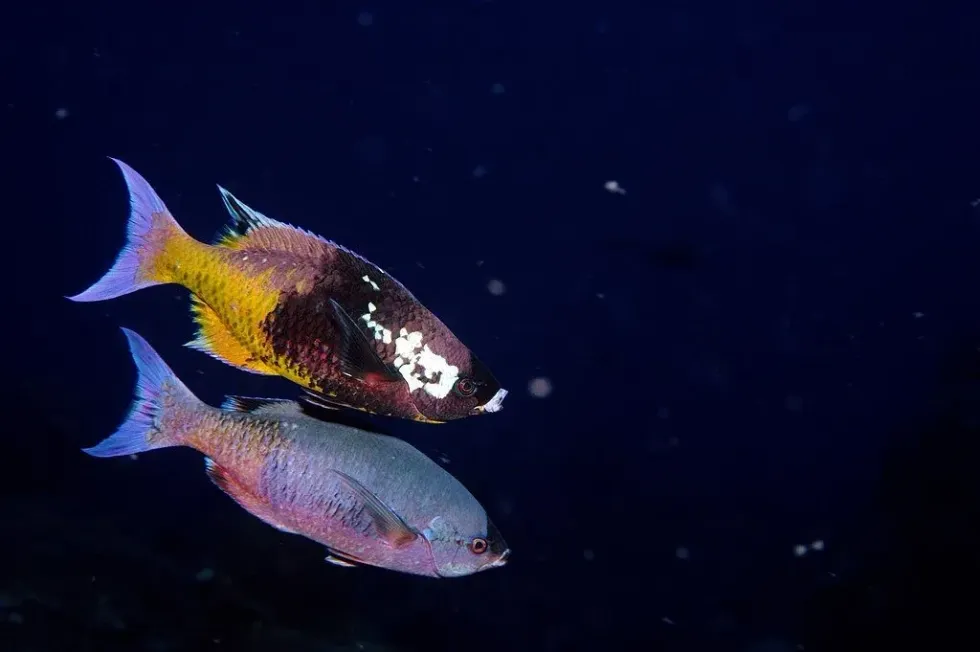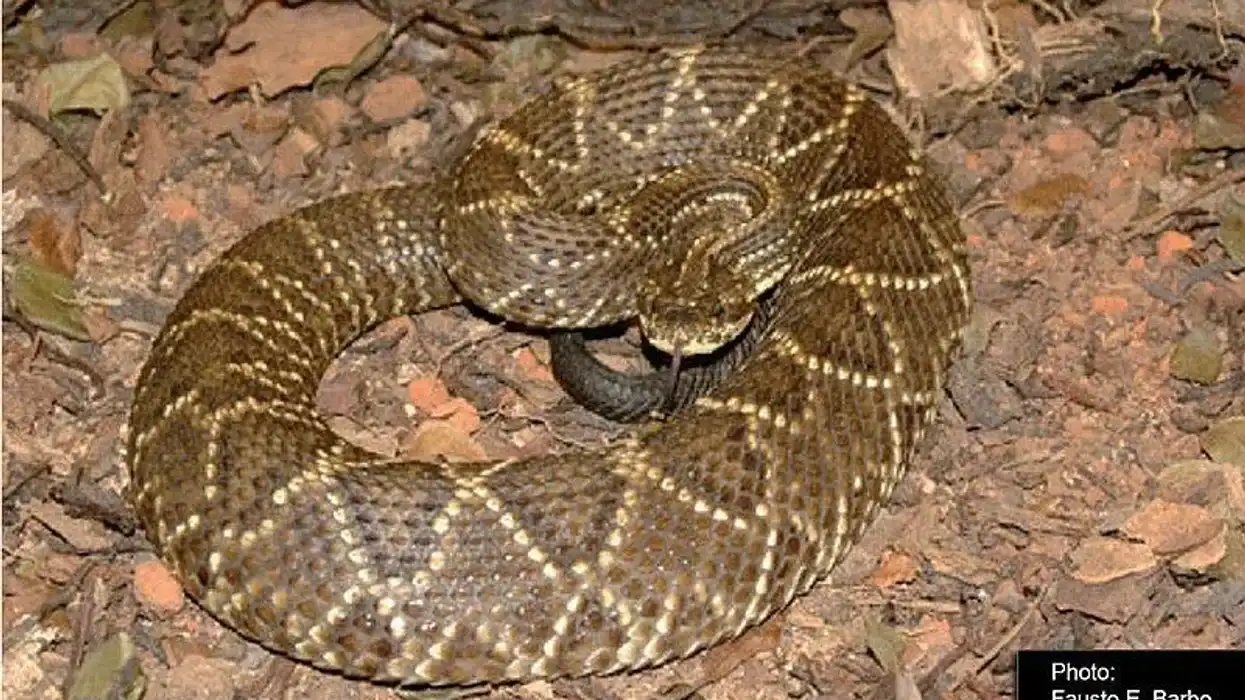The creole wrasse is a type of wrasse fish that belongs to the Labridae family and genus Clepticus.
There are over 600 wrasse fish species in the world related to the creole wrasse such as the blue diamond creole wrasse, Belize creole wrasse, Caribbean creole wrasse, bluejacket creole wrasse and bonaire creole wrasse that is also referred to as creole wrasse bonaire. Out of these, the creole wrasse is found in the western Atlantic Ocean.
These individuals are quite common in the southern part of North America and can be found in the related areas such as the Caribbean Sea, the Bermuda Islands, and the Gulf of Mexico.
In the western Atlantic ocean, this fish can be found feeding on plankton, invertebrate larvae, and pelagic turnicates. Since this fish mostly feeds on plankton, small jellyfish, and pelagic turnicates, the teeth of this species have become blunt over the years.
However, they have a protruding mouth with which they catch their prey. In addition to that, their eyesight aids them during hunting for prey for as well.
This fish is also referred to as creole reef wrasse, sorrel chub, purple-tailed wrasse and the blue girl because of the creole wrasse distinctive features and their unique violet, pink, and red coloring.
Keep reading for more amazing facts about the creole wrasse. If you liked this article with facts about the creole wrasse, also check out our other articles with some great facts about the channel catfish and meagre fish.
Creole Wrasse Interesting Facts
What type of animal is a creole wrasse?
A creole wrasse (Clepticus parrae) is a type of wrasse fish.
What class of animal does a creole wrasse belong to?
The creole wrasse (Clepticus parrae) belongs to the Actinopterygii class of animal.
How many creole wrasse are there in the world?
Since the creole wrasse fish (Clepticus parrae) lives under ocean water and in coral reefs in the western Atlantic Ocean, it is difficult to estimate their exact population. However, scientists and researchers have concluded that the population trend of this fish is stable and not at any immediate risk of decline.
Where does a creole wrasse live?
A creole wrasse (Clepticus parrae) is found in the western Atlantic Ocean and in the adjoining coastlines of the Bermuda Islands, the Gulf of Mexico and the Caribbean Sea. Its population distribution also extends to the waters near the southern part of North America to the South American country of Brazil.
What is a creole wrasse's habitat?
A creole blue diamond wrasse prefers rocky or shallow distribution of coral reefs on steep slopes. This species can also be found pretty deep in the ocean.
Who do creole wrasse live with?
Creole wrasse (small) fish mostly live together in groups under coral reefs on slopes. They are also seen swimming in small or large-sized schools.
How long does a creole wrasse live?
Most wrasse fish live for around three to five years in the wild. However, some, like the humphead wrasse, have also been known to live for up to 30 years in the wild.
How do they reproduce?
The mating of these Caribbean fishes is not seasonal but usually happens during the afternoon. The breeding of Caribbean creole wrasses has been noted to happen in leks.
The males congregate in a large group where they display themselves in order to attract females and begin the mating process. In the course of the mating process, the female spawns yellow eggs in the water column and they are fertilized by the male. These yellow eggs hatch and creole wrasse juveniles start to grow from the larvae.
What is their conservation status?
The International Union for Conservation of Nature (IUCN) has listed the Caribbean creole wrasse (Clepticus parrae) under the category Least Concern in its IUCN Red List.
Creole Wrasse Fun Facts
What do creole wrasse look like?
The Caribbean creole wrasse is a moderately long fish with a thick body. Its body has the shape of a cigar which is common to the shape of other wrasse fishes.
It has 12 dorsal spines, 12-13 anal soft rays, and 10 dorsal soft rays on its body. During the initial phase of their life cycle, they are purple or blue in color.
During their last phase, they become violet or deep purple in color instead of the earlier blue color. Larger fishes have a yellow-ish shade on most of their body during the first phase of the life cycle along with the blue coloring. Unlike the creole wrasse juvenile, adults have crescent-shaped caudal fins.
These fins allow them to swim quite fast when needed. Their teeth are not as sharp as other wrasses in the family because of their planktivorous diet that includes pelagic tunicates.

How cute are they?
Creole wrasses are not very cute but they are extremely attractive due to their unique coloring. The vibrant red and pink color of this fish species stands out among all other wrasse fishes.
How do they communicate?
Purple creole wrasse individuals mostly use body language in order to communicate with each other. This fish species tilts its head up and down and moves it from one side to the other to communicate.
How big is a creole wrasse?
The average length of a purple creole wrasse is approximately 1 ft (0.3 m). It is approximately the same size as the rockmover wrasse which grows up to 11–12 in (27.9–30.4 cm).
How fast can a creole wrasse swim?
Purple creole wrasses do not need to swim very fast as they mostly feed on plankton in the coral reef. However, they can swim pretty fast if they are being chased by prey. It has also been observed that this wrasse fish can dive pretty deep up to a depth of 131.2 ft (40 m).
How much does a creole wrasse weigh?
The weight of the creole wrasse species has not yet been calculated by any scientists or researchers.
What are the male and female names of the species?
There are no unique names for referring to male or female creole wrasses. Therefore, researchers usually refer to them as a male or female creole wrasse.
What would you call a baby creole wrasse?
There is no distinct or separate name for a baby creole wrasse. It is born in the form of a larvae and once it matures into a smaller fish that can feed itself, it is known as fry.
What do they eat?
The diet of small size creole wrasse mostly comprises plankton, invertebrate larvae, pelagic tunicates, and jellyfish. They also search for and feed on pelagic tunicates that are a type of free-floating marine animal found in the reef and western Atlantic Ocean waters.
Are they dangerous?
Small size creole wrasses that are common in the western Atlantic Ocean and the Caribbean Sea are not known to be dangerous to human beings.
Would they make a good pet?
Like other common pet fishes such as the small angelfish, the small size creole wrasse can also be kept as a pet. Although they are not very popular as pet fishes, they have a peaceful temperament and require a large aquarium to live in.
However, owners have to ensure that their diet matches what they would eat in the wild.
Did you know...
Small wrasses are extremely active during the day but at night, they wedge themselves inside coral reef crevices in order to go to sleep.
Are creole wrasses endangered?
The small creole wrasse (Clepticus parrae) is not currently listed as Endangered under the IUCN Red List. Their population is considered to be stable and not at any risk of immediate decline. Therefore, they have been listed under the category of Least Concern.
Are all wrasse fish born female?
All purple creole wrasses are born female out of their eggs but this is a unique species as mature female fish can change their sex to male. This ability to change their sex during their life cycle from female to male makes them protogynous hermaphrodites.
When the dominant male in a group dies, smaller females change their sex to male. They also change their body coloring to that of the last phase of their life cycle.
Here at Kidadl, we have carefully created lots of interesting family-friendly animal facts for everyone to discover! For more relatable content, check out these belted kingfisher facts and hooded merganser facts for kids.
You can even occupy yourself at home by coloring in one of our free printable wrasse coloring pages.










